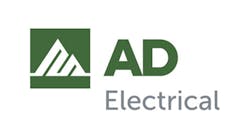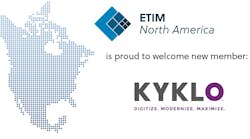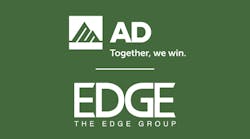Channel Marketing Group's survey found that distributors are doing surprisingly little research to measure customer satisfaction.
Distributors like to give away products emblazoned with their logos, and they like sending customers on vacations and taking them on outings, but the effectiveness of these and other marketing tools is less clear than the returns from providing more training, better technology, guaranteed product availability and value-added services, according to a survey recently completed by David Gordon of Channel Marketing Group (CMG), Raleigh, N.C.
The survey report, “Understanding Distributor Marketing Tool Usage & Effectiveness,” solicited insights from distributors in the construction and industrial trades and its conclusions were based on about 200 responses. Electrical distributors made up approximately 60 percent of respondents to CMG's survey, so even without breaking them out specifically solid conclusions can be drawn about how marketing tools are used by distributors in the electrical industry.
The study found that 97 percent of distributors conduct training for their customers and rated its effectiveness in raising product awareness the highest, followed by trade shows and open houses, then lunch & learn sessions. While 87 percent of distributors host counter days, almost one-third say they're not effective. Mobile “counter day” promotions, on the other hand, provide a better ROI, said Gordon.
A growing number of distributors are using iPads and other tablet computers, with 27 percent providing them as tools for their salespeople and 23 percent developing apps for customers. They rated the effectiveness of these tools as high, particularly for catalogs on iPads. Many distributors also have a presence on Facebook and/or Twitter but are not generating results from it. Of the distributor respondents, 97 percent have a website, but only 54 percent have e-commerce capabilities for either public or existing customer use.
At the leading edge, Gordon tells Electrical Wholesaling he's seen some distributors who have developed smart-phone applications where the customer can take a photo of a catalog number or UPC number and the app pulls up the part in the distributor's catalog so the user can order by phone. “That takes some vision to invest in that, and it takes some faith, because there are not a lot of customers out there using that kind of process, but it definitely sets the distributor apart,” Gordon says.
Results on guarantee programs showed that a third of distributors have in-stock guarantees and considered them highly effective. Other process guarantees such as on-time delivery, error-free ordering and accurate invoices were basic customer expectations.
The most effective sales collateral is still a printed catalog, followed by direct mail and print newsletters. Distributors rated them significantly more effective than e-newsletters. Gordon concludes this is “possibly due to an abundance of e-newsletters or the scanning nature of online materials.” Brochures were considered less effective but necessary as door-opener tools for new accounts and account penetration opportunities.
Customer-specific incentives such as activities and group outings were considered effective for enabling personal connections, and the study showed that group travel was as effective as customer-specific retreats. At its core this is still a relationship-driven business. Where distributors share recreational interests with good customers — whether it's a round of golf, a ballgame, or a fishing trip — they rate these outings as effective marketing tools.
Price promotions were not considered effective. Gordon distinguishes this from customer-specific pricing, which is very effective, but says promotions that focus on price specials don't stimulate sales because the competition can meet that number if they want to.
Distributors rated the effectiveness of joint sales calls with their manufacturers and independent manufacturers' reps as very high, with over 70 percent giving the activity a 4 or 5 rating on a scale from 1 to 5. Otherwise, CMG found distributors continue to take a reactive approach to selling initiatives, with 35 percent having an in-bound call center and only 38 percent doing outbound telemarketing. “Virtually no one is using an automated outbound calling system,” the report said.
Gordon sees opportunities for distributors willing to invest in telesales and call center operations. Very few of the respondents are doing this, but Gordon wonders why. “Think about how many house accounts a distributor has that don't get serviced by an outside salesperson. How often do they think of you? There's value in having someone call them and say, ‘We're now carrying such-and-such new product,’ or, ‘We noticed you haven't purchased from us in the past few months and we wanted to know if there's anything we can do for you.’”
Value-added offerings such as job-site trailers, order-staging, efficiency audits and kitting were used by 75 percent to 90 percent of respondents and rated high on the effectiveness scale. Gordon expects to see this grow as a differentiator for more progressive distributors.
“The distribution business has become much more subtle. You're having to niche, and have different strategies for different audience types,” he says. This makes internal communication about the strategies and successes even more important, he adds. “Not everyone within the organization knows what the others are doing. You could have brochures on your various value-creation services — job-site trailers, lighting audits, fuse audits, storeroom management, training. Just the process of thinking about that brochure forces you to aggregate what you have.
“It takes a management commitment wanting to generate revenue that way,” he adds. “You have to treat it like a product, build the market, put a price on it and teach people how to sell it. Don't let it just be given away.”
Distributors said 68 percent of their marketing activities mention at least one supplier, most often to make use of marketing and co-op funds. Slightly under 40 percent of the distributors' total marketing budgets are funded by their manufacturers.
One area where distributors may be dropping the ball is on researching their markets and gathering information from their customers and prospective customers. The survey showed that almost half the distributors don't conduct customer satisfaction surveys and over two-thirds don't have a customer advisory council or purchase outside market research.
“I'm surprised at how little research they're doing,” he says. “They're not acquiring any prospecting lists, which means they think they know everyone there is to sell to, and they don't purchase any market research. What they're doing is marketing by walking around. They market to people they currently sell to, and that's it.”
The results of the survey have to be viewed in context, he cautions. The distributors who responded are most likely to be the more proactive ones when it comes to marketing. “You've got to go on the presumption that people who respond to the survey are interested in the topic. Distributors who are not doing anything with marketing are not going to respond. So that raises another question: Do we have an issue of haves and have-nots?” Gordon asks. “The better distributors have done more marketing and have more diversified marketing endeavors, whereas people on the low end are not doing anything, or just doing ‘branded’ endeavors — logo hats, counter days, the usual.”








